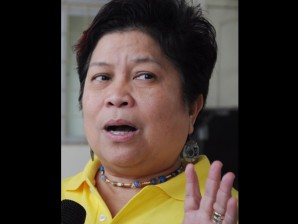After losing their loved ones and homes to monstrous floods and mudslides unleashed by Tropical Storm “Sendong,” many survivors are having bouts of depression, with some exhibiting suicidal tendencies, social welfare officials said Wednesday.
Weeks after disaster struck Cagayan de Oro and Iligan cities on December 17, many are still showing signs of depression which manifested during the stress-debriefing sessions with personnel from the Department of Social Welfare and Development (DSWD).
“There are more severe cases, like those with suicidal tendencies, after losing their spouses and even their homes which they have saved up for. They come from middle-income families,” Social Welfare Secretary Corazon Soliman said by phone.
They, like the depressed, are subjected to continuous stress debriefings, she said. But Soliman could not give figures of those affected.
Stress debriefers have so far interviewed 865 individuals, consisting of 544 adults and 321 children, inside seven evacuation centers and four communities, according to DSWD Region 10 Director Araceli Solamillo.
“To relieve them, we ask them to tell us their terrible experience,” she said by phone.
The resumption of classes this week after the holiday season, where school children should be encouraged to retell their experiences and find comfort in one another, would be a good first step to their healing, Soliman said.
“Sendong” killed more than 1,000 people, displaced thousands of families, and damaged P1.3-billion worth of infrastructure and crops.
Some 37,563 families in Cagayan de Oro and 17,055 families in Iligan were affected by the storm. Some had gone back to the homes of relatives and friends, while others were still staying in evacuation centers, and still others were being moved to transition shelters, like tents and bunkhouses, according to Soliman.
The government is targeting permanent homes to build by March, she said.
“They can stay at the transition shelters until we’re able to finish the permanent housing by March. Around that time, 50 to 70 percent of the families will be in permanent houses,” she said.
